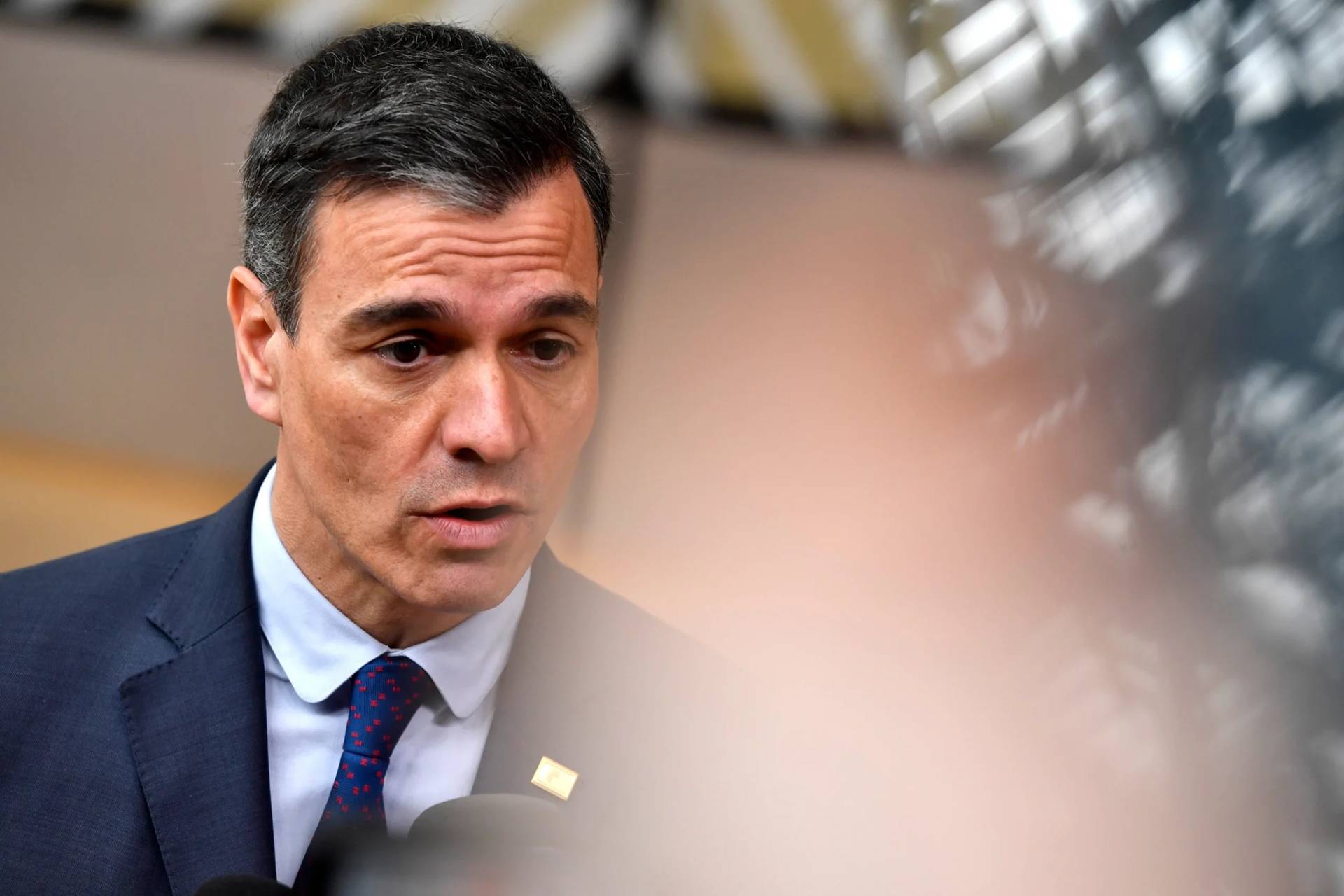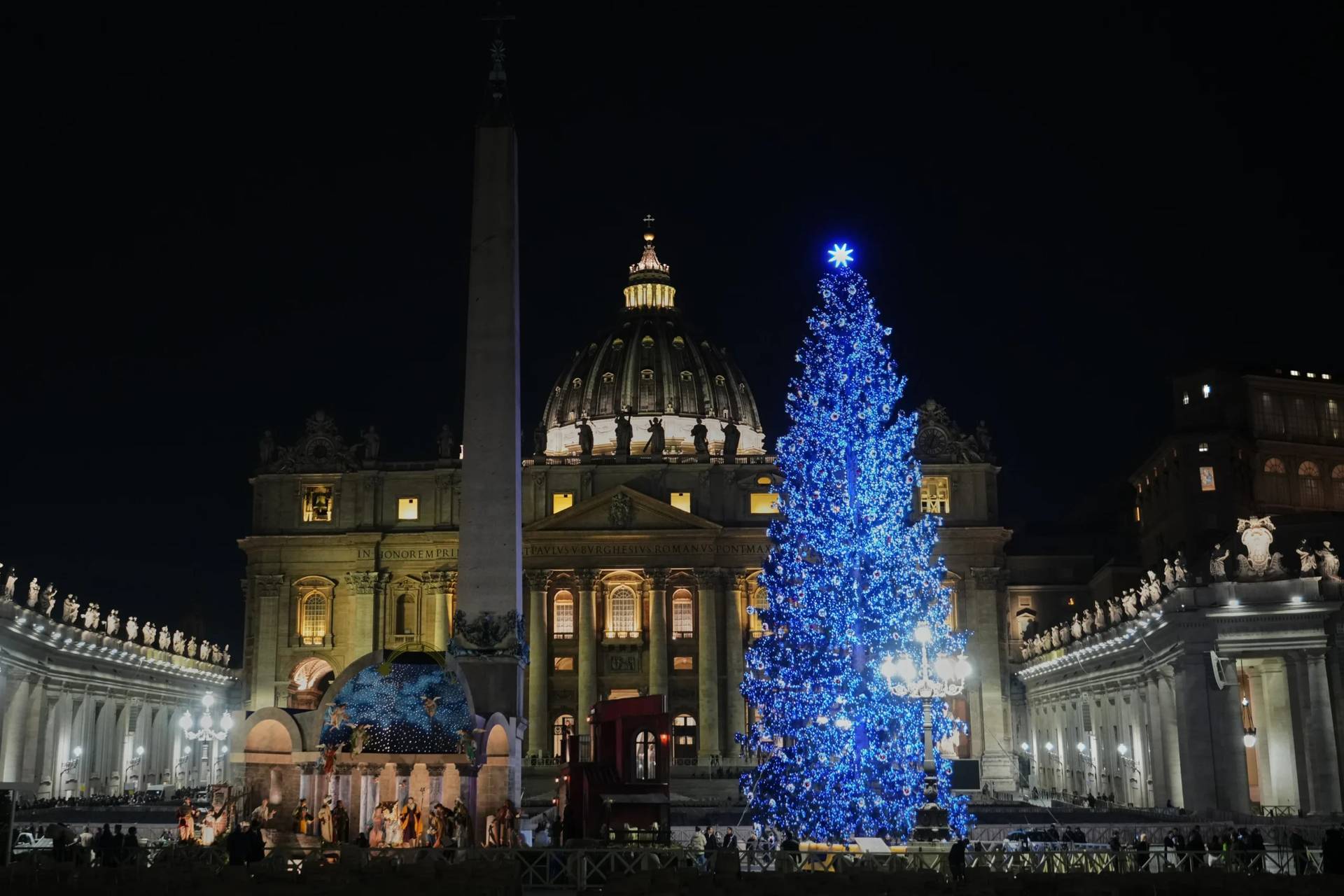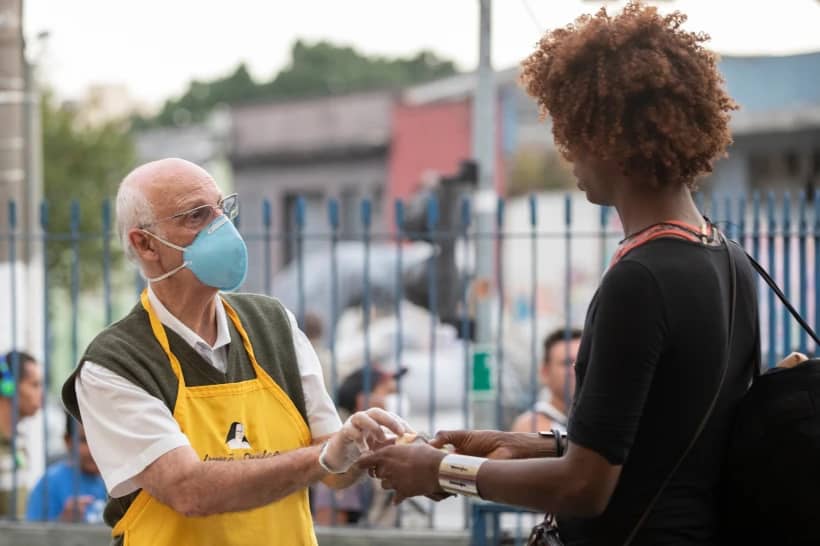ROME –Thinking about it, there are really only a handful of places in the world a pope can go in which much of the drama, at least heading in, is almost guaranteed to be drawn from the dictionary. The $64,000 question in those locations boils down to, will the pope use a certain word, or won’t he?
When Pope Paul VI traveled to the Middle East in 1964, observers were keen to see if he would use the word “Israel,” in effect recognizing the Jewish state’s existence. (He didn’t.) When Pope Benedict went to Israel a quarter-century later, many Jews were anxious to hear the German pontiff refer to the Holocaust as the “Shoah,” the Hebrew term used since the 1940s. (He did.) When Pope Francis visited Armenia in 2016, people wondered if he would risk calling the slaughter of Armenians during World War I a “genocide” despite predictable Turkish umbrage. (He did.)
Now, as Francis heads to Myanmar and Bangladesh for a Nov. 26- Dec. 2 visit, one burning question is whether he’ll openly use the term “Rohingya” to describe Myanmar’s oppressed Muslim minority, despite the clear disapproval of the government and even an open appeal by his own local cardinal not to rock the boat.
RELATED: Cardinal Bo urges Pope Francis not to use the word ‘Rohingya’ during Myanmar visit
It remains to be seen what Francis will do, but the background partly explains why a Vatican spokesman wryly describe the outing as “very interesting diplomatically.”
Several other dilemmas also await Francis on his third outing to Asia, including the fate of Myanmar’s Christian minority, which also suffers harassment and persecution. The pope undoubtedly will want to try to make things better – without, of course, inadvertently making them worse.
Along the way, Francis will engage the local political class; meet with religious leaders, including Rohingya Muslims; and deliver 12 addresses, including 5 homilies.
Elphie Galland, Regional Advocacy and Communications Officer of the Jesuit Refugee Service for the Asia Pacific region, told Crux that she would like to see the pope encourage both countries to work together to respond to the exodus of the Rakhine state, “while we stress that the prayers and concerns of so many across the whole world accompany them. This situation is a challenge to all humanity.”
A complex trip
According to Vatican spokesman Greg Burke, “we will find out together during the trip,” if the pope uses the word ‘Rohingya’ or not. During his own briefing Burke used the term, saying that “it’s not a forbidden word.” Francis has used it several times before.
Both countries are currently in the global spotlight, as some 600,000 Rohingya Muslims have fled Myanmar towards Bangladesh in the past three months, escaping what Washington has described as “ethnic cleansing.”
On Thursday, the two countries signed an initial deal for repatriation of the refugees, but no details of the arrangement have been revealed, and human right watch groups have expressed doubts over what little has been shared.
Ben Rogers, a human rights activist from the UK who works with Christian Solidarity Worldwide, hopes the pope will bring a message of “peace, reconciliation, justice and human dignity.”
He highlighted the fact that the pope will meet the Commander-in-Chief of the army, something that was decided at the last minute, after Francis met Bo in Rome on Sat. 18.
An expert on Myanmar, Rogers said that this, together with the fact that he’ll meet Buddhist leaders, representatives of all religions and Aung San Suu Kyi before going on to Bangladesh where he will meet Rohingya refugees, “points to a mission of reconciliation, which of course will never be achieved in three days, but one where seeds of peace can be sown and a light can be shone in a dark situation.”
In November 2015 Aung San Suu Kyi and her party, the National League for Democracy, ended over five decades of military dictatorship when they overwhelmingly won the elections. They had done so in 1990, but the results weren’t respected by the military government, and instead, she was put under house arrest.
As a result of the 2015 elections, she heads Myanmar’s first civilian-led government in over half a century.
Also known as “The Lady,” she’s constitutionally banned from becoming president, so she serves as “State Counsellor” and foreign minister, while a close associate holds the office of President. The Rohingya crisis has earned her the condemnation of many within the international community, who accuse her of either being silent or too slow to act.
According to Win Tun Kyi, head of Caritas Myanmar, “she’s our only hope,” as the country’s democratic leadership structure is still very weak and the army continues to be very powerful. They retained control of the Ministries of Defense and Home Affairs, in addition to the borders and 25 percent of the congressional seats.
“We have to be very hopeful and supportive of what the government is trying to do in this democratic transition,” he said.
The pope, like Aung San Suu Kyi, will have to move carefully to avoid provoking Myanmar’s military leaders, which doesn’t mean support them. “They did a lot of bad things to the country, the people and the ethnics,” the Caritas official told Crux.
Bangladesh, on the other hand, is also a complex country for the pope. It’s the world’s eighth most populous nation, and 86 percent of its people are Muslims. The 375,000 Catholics represent less than 0.2 of the total population.
In addition, despite recent improvements in the nation’s economy, Bangladesh is one of the world’s poorest countries, with an estimated 30 percent of the population living under the poverty line, with less than $2 a day.
This will be the second time the pope visits Bangladesh, with John Paul II doing so in 1986. Pope Paul VI made a stopover in 1970 in what was then still East Pakistan.
During his Nov. 30-Dec. 2 visit to the capital, Dhaka, Francis will meet Prime Minister Sheikh Hasina and President Abdul Hamid as well as members of the diplomatic corps and civil society.
He will celebrate Mass for more than 100,000 people, where he will ordain 16 priests, mirroring a similar action by John Paul II, who ordained 18 in the ’80s.
According to Human Rights Watch, the country witnessed a spate of violent attacks against secular bloggers, academics, gay rights activists, foreigners, and members of religious minorities in 2016.
Hence in Myanmar, Francis will have to tread carefully with the military and the Buddhist community, and in Bangladesh he’ll have to be mindful of hard-line Muslim nationalists, who in recent years have attacked members of the country’s Hindu minority.
RELATED: Parolin says pope will encourage small Church in Myanmar, Bangladesh
The Christian equation in Myanmar
Some observers fear that fallout from a perceived pro-Rohingya agenda by Francis could also affect the local Christian community, which makes up six percent of the total population, and could target Catholics specifically.
The United States Commission on Religious Freedom issued two reports on Myanmar last year. One, focusing on the situation of the Rohingya. A second one was titled “Hidden Plight: Christian Minorities in Burma.”
Father Thomas Reese, who was chair of the commission at the time the reports were released, told Crux he worries that, if the pope strongly defends the Rohingya, the radical Buddhist monks will stir up the people against Christians: “The persecution of Christians in Chin, Kachin, and Naga has been fierce over the years.”
Reese, who’s also a columnist at Religion News Service, said that the pope has been put in a very difficult situation.
“The cardinal has asked him not to even use the word,” Reese said. “But if he doesn’t say anything, what happens to the prophetic pope?”
The fact that the situation of the Rohingya is so grim, doesn’t mean the world should ignore that of other minorities, including Christians, he said.
Last December a Catholic church in northern Shan State was bombed and subsequently two Kachin Christian pastors, Nawng Latt and Gam Seng, were arrested. Their crime? Taking journalists to the bombed church to gather evidence.
Reese is not the only person concerned over possible backlash against the Church during the pope’s trip. An expert close to the local Church who has requested to remain unnamed for safety concerns, told Crux that it’s easy to say the Church should never “put its own safety or interests first,” and focus on the wider needs when those appeals are “issued from the comfort of the West.”
He said he can imagine Bo himself being pressured by local Catholics who fear the Buddhists’ ultra nationalist group Ma Ba Tha might turn against them if the pope were to say the wrong thing.
Myanmar has an estimated 500,000 Buddhist monks. That’s roughly 20 percent more monks in one country than Catholic priests around the world. Francis won’t want to antagonize them.
The interreligious element, and a focus on youth
In both countries Francis will have the opportunity to meet with the local religious communities in two interreligious events. The one in Myanmar was added at the last minute, again, at Bo’s request. The cardinal estimates that “99 percent” of the population is religious.
“Religious leaders getting together will have a very deep impact of the followers of different religions,” he said ahead of the trip. “They listen to their leaders. That’s why the religious leaders getting together, especially meeting with the pope, could have very good results.”
Few details about the encounter in Myanmar have been released. However, during the one in Bangladesh there will be Muslim, Buddhist, Hindu and Christian leaders, including Rohingya.
Galland, of the Jesuit Refugee Services, acknowledged that it would perhaps have been easier for the pope to go to countries that understand Christianity instead of visiting countries that are predominantly Buddhist or Muslim, but she believes the visit can bring “light and encouragement.”
She hopes that the pope will “deliver a message of peace,” with an emphasis on “inclusivity and compassion,” going beyond these two countries and reaching the region.
“It is important, especially in places where conflicts are still ongoing, to find ways to gather around shared ideas and principles instead of dividing over our differences,” she said.
“Therefore, it would be interesting to receive a message encouraging interfaith dialogue in these two countries and to engage with the Buddhist and the Muslim communities on the common grounds of our religions.”
Rogers, who’s written five books on Myanmar and who was baptized by Bo in 2014 said he hopes the pope will “touch hearts and open minds with a bold but loving message of genuine peace, true freedom, real justice and lasting reconciliation for all the peoples of Myanmar,” he told Crux.
The country has endured decades of repression and conflict, affecting the lives of millions. The challenges of religious and racial intolerance persist, but Rogers hopes Francis can “bring a message of unity in diversity,” highlighting the dignity and basic rights of every person, “regardless of their race and religion.”
Diversity and pluralism are not only to be celebrated but are vital to the health and wellbeing of a multi-ethnic, multi-religious nation like Myanmar, the expert said, adding that he hopes the pope can convey this.
“For such a tiny Catholic population, this is a profoundly significant time,” Rogers said. “As history shows, papal visits to countries that have endured decades of repression or conflict can often be sources of healing and renewal.”
Both trips will end with the pope encountering the local youth, something which, according to Burke, the papal spokesman, was done at the pope’s specific request, in an attempt to show they are an “essential” part of the Church.
Francis’s third Asian tour thus shapes up as complex and dicey. Since he’s a man credited with helping forge some of the world’s key diplomatic turning points in recent years, it’ll be interesting to watch him once more try to thread the needle.
Stay tuned for Crux’s latest news from Pope Francis’s Nov. 27-Dec. 2 visit to Myanmar and Bangladesh, from where Crux’s Vatican Correspondent Inés San Martín, travelling with the pope, will be providing regular updates. Follow her on Twitter @inesanma and visit Crux for daily updates.

















